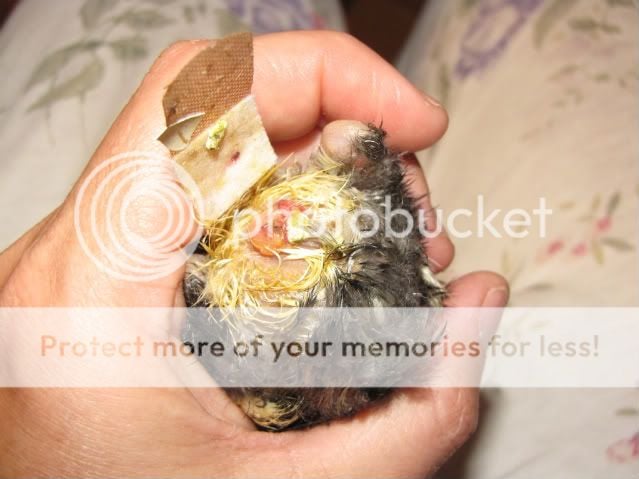Hi there, first thing you want to do is prevent infection... because if the yolk sac gets infected it can kill the chicken. I had some success saving a couple of chicks who had your exact problem this summer. I'll tell you what I did. Hopefully some of it helped them... they are both running around happily today.
I used terramycin / oxytetracycline I bought at
TSC. It did a good job, and was very cheap. If there's no
TSC nearby try other farm stores, feed stores or a vet. It comes in a plastic packet with instructions printed on the outside.
Medicating a baby chick is quite easy if the chick knows how to drink,
IF it wants to eat and drink. Just mix up some water and powdered antibiotics according to the packet instructions, put it in a chick waterer and put it where the chick can get it.
If the chick doesn't want to drink or do anything else, it's still pretty easy to medicate (and my chicks were like this). Prepare some liquid antibiotics (terramycin, or oxytetracycline) - make it several times stronger than the label says. You only need to make up a couple of tablespoons of water, enough to put in a tiny bowl, jar or dish. You'll need just enough oxytetracycline to make the water look pale yellow - a very small amount, like you were salting french fries. Just add a little and dissolve it, if it looks too yellow tip out a little liquid and add some more water. You want to hold the chick securely and comfortably, and then dip the chick's beak in the dish of medicine for about 1 second, as if you were showing it water for the first time. Then let it lift its beak out of the water. If you did it right (and if the chick is relatively awake) it will lift its head up and "drink" down the stuff it has found in its mouth. Give it 3 or 4 of these tiny drinks, a couple times a day, for 3 or 4 days. Make up a fresh batch of medicine each morning, because the mixture gets stale after a day. Give the chick access to some plain water in case it starts to feel better and gets thirsty. I fed my chicks moist food to make things simpler for them.
You could also try giving one of these booster drinks to a chick who
wants to drink, just one time, to get a bunch of antibiotic into its system before you give it the normal-strength medicine in a chick waterer.
An antibiotic should help with your chick's redness, swelling and listlessness.
Also, keep it in a clean, warm place (with clean, fresh litter) because you want to keep dirt or poop from getting onto its open navel wound and making things worse.
In a few days it should start to scab over, it will be covered with a yellowish hard crust which looks icky, but is just the first step in healing the hole. (do a sniff check to make sure the chick tummy smells ok, if there is infection you will smell a stinky smell
) If the chick has beat its infection, the crust will eventually fall off and the tummy will look ok underneath it.
If there is a huge, open hole (like as big as an M&M candy), it might be best to try some stitches as well.
For putting on the outside of the wound, the best topical antibiotic I have ever used is called "animax". You can get it at a vet; we first used it when we had a cat with an abscess. It's much more effective than the bacitracin / neomycin ointments they sell for first aid.
Good luck, you can beat this!





